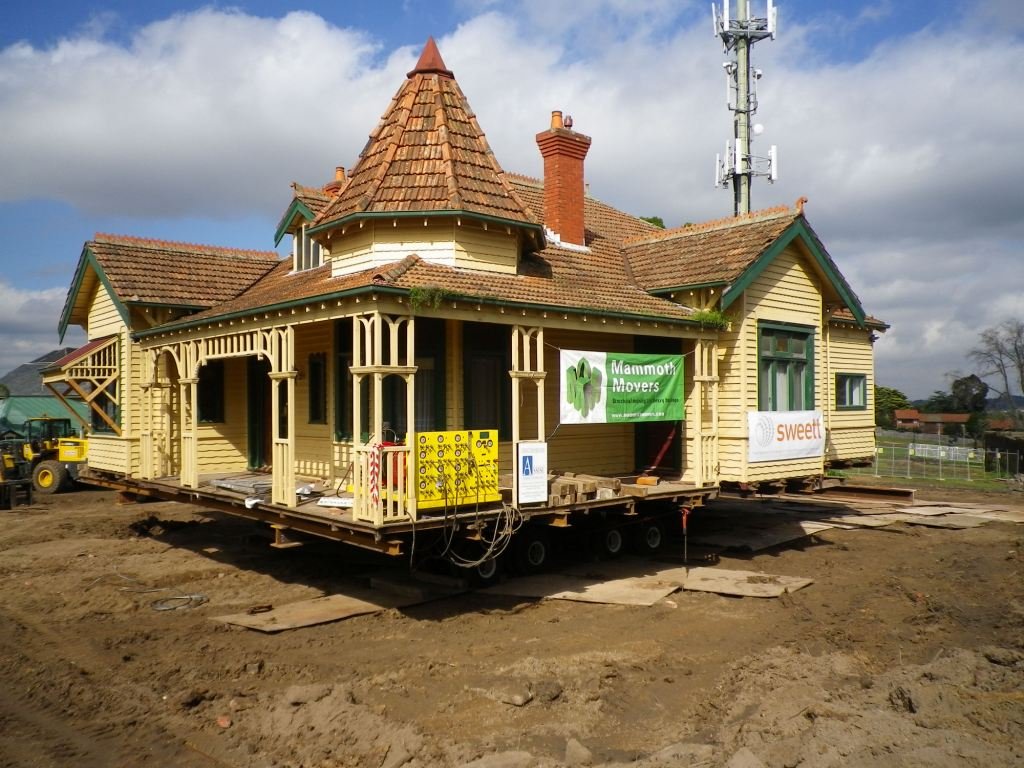
Building Relocation
Mammoth Movers is the first to provide a masonry relocation service of this kind in Australia.
Until now, these structures could not be moved as a whole and were left for demolition or dismantling. This has meant that buildings have been needlessly lost, including buildings of heritage significance.
Why relocate?
Relocating of existing structures within a development site can reduce land acquisition cost and alleviate conflict due to controversial demolitions. A dwelling may be relocated to allow a piece of land to be subdivided or to allow for better utilisation of existing space.
Some example applications of house relocation include:
Removal of buildings due to road widening or new road/rail development
Removal of buildings due to widening of traffic intersections
Removal of buildings due to rezoning - residential to commercial or industrial, e.g. new supermarkets or airfields
Moving of heritage houses due to development risk
Redevelopment of Defence sites or other mass population sites
Moving or jacking of buildings in jeopardy due to sea ingress/cliff erosion or flooding
Moving of houses on prime land due to miss matched building-land value ratio e.g. waterfront properties
Relocating of buildings within an existing block to enable the better use of the block
Relocation of older style display homes located in prime commercial areas to open up for commercial development
Moving of commercial and farm shedding
We have adopted proven methodology and specialised equipment developed in the USA and are underpinned by a solid practical and technical knowledge foundation.
We specialise in moving:
Masonry buildings: Stone and solid brick buildings
Very heavy structures: Greater than 100 tonne
Specialised heavy haulage moves: Non-standard cargo where platform trailers are unsuitable
Trusted Methods

Each relocation project is unique
We have the resources necessary to ensure a successful relocation project. We also use flexible contractual arrangements to suit customer and project-related requirements.
The Relocation Process
Each structural moving project is comprehensively assessed by our engineers in order to ensure structural suitability of the building and to identify any issues that may affect the move.
The general process of each move has a defined structure:
Step 1: Engineering Calculations
Before any work begins on the building itself, engineering calculations are required. The design of the building is comprehensively analysed, the building weight and load distribution is determined, the location and size of the steel support beams is established, and the move process is planned in detail to ensure a satisfactory outcome.
Step 2: Permits and Approvals
All required permits and approvals are obtained, and all services such as gas, water, electricity and telephone are disconnected before work commences.
Step 3: Excavation
Using specialised digging equipment, the dirt from underneath the building is excavated, and temporary support jacks are installed.
Step 4: Support Installation
Steel beams are inserted into the precise position where they will bear the entire weight of the building during the move. The size and position of the beams are a crucial part of the success of the move.
Step 5: Raising
Using specialised hydraulic jacking equipment, the building is slowly lifted off its original foundations. The jacking equipment is designed to ensure the building stays level at all times, thus minimising stress on the structure. The building is continually jacked and supported until a suitable height has been reached.
Step 6: Transportation
Purpose-built rubber tyred ‘dollies’ are placed under the building and attached to the steel supporting structure. These ‘dollies’ incorporate hydraulics which ensures the building stays stable and unstressed during the move. Once attached, the building can be towed to its new home, and positioned over the new foundations.
Step 7: Relocation
Once the building has arrived at its destination site, it is maneuvered into place, and is then lowered onto its new pre-prepared foundations.
Step 8: Reconnection
The building can then be reconnected to services, the new site landscaped, and the building is now ready for a new life in its new location!

Solid experience, quality resources.
We're backed by our own engineering resources and we have solid contacts with some of North America's premier professional movers. We're also a proud member of the International Association of Structural Movers.


